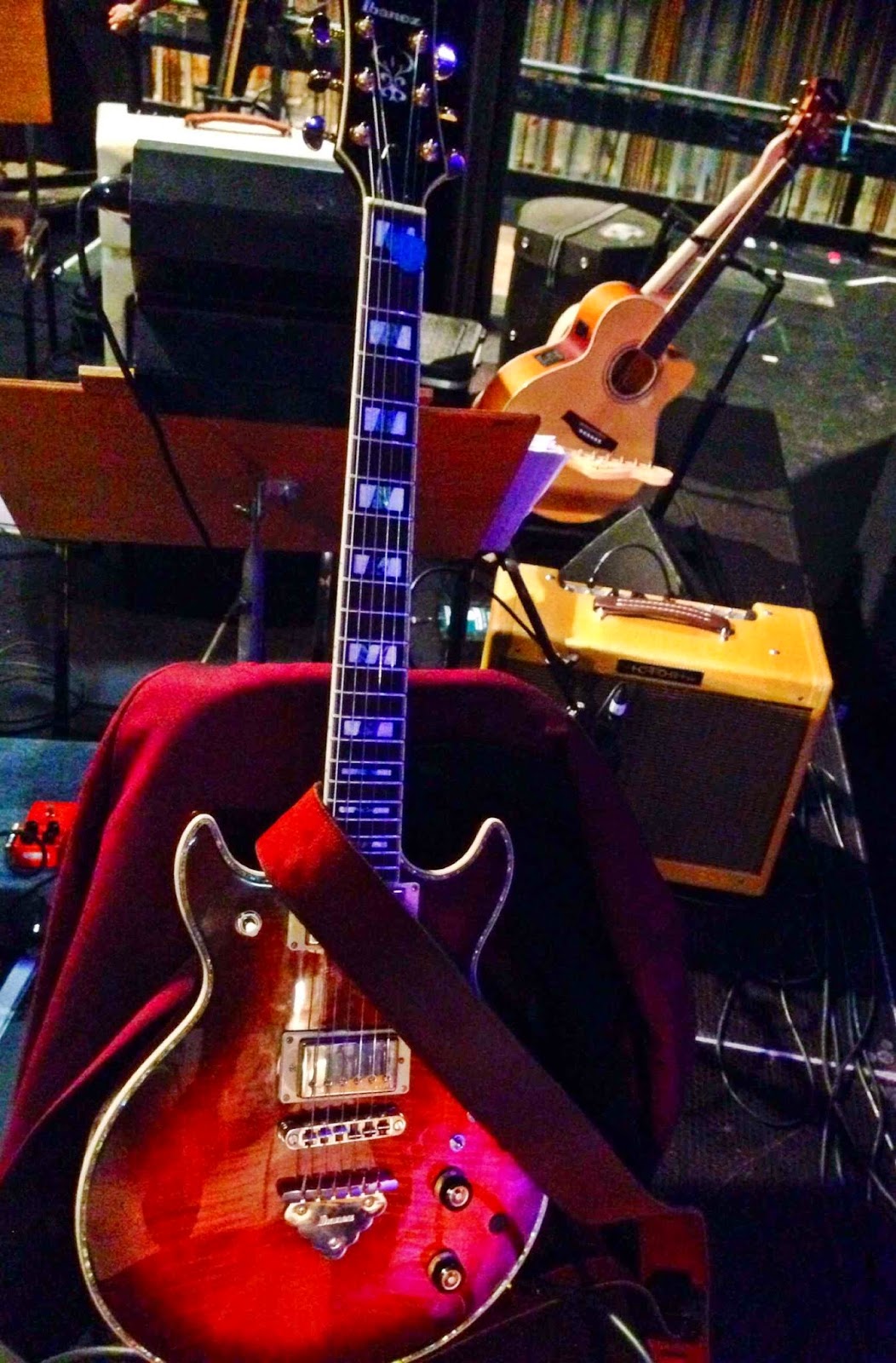 Everyone gets busy from time to time so how do we maintain practise while still managing to live our busy lives?
Everyone gets busy from time to time so how do we maintain practise while still managing to live our busy lives?In my opinion the key is to utilise downtime. For example; if you need to travel somewhere then maybe the train is a good option? You could play your guitar and run something like scales, arpeggios, chord shapes etc while on the train. These are things that might be impossible on the bus and most definitely impossible while driving a car. Ha.
Another thing you could try is to leave your guitar on a stand while at home, rather than in the case. That way if you have 5-10 minutes downtime to spare while waiting for someone to arrive you could quickly grab that guitar and practise something. Anything. And the guitar is staring at you all the time saying... PLAY ME!
I consider listening to music to be an integral part of my practise. When I say listening, I mean really listening: not just having music on in the background when cleaning up etc. I often try to grab a few minutes here and there to listen to tunes. iPhones make this a breeze these days. If I can find 5-10 minutes spare that could potentially be 1-2 tunes I could absorb. At the moment I am trying to fill my ears with the new Scott Henderson record - Vibe Station. It's excellent. Check it out here.
Another idea that might work is to get up 15 minutes earlier in the morning to practise. I remember hearing that Frank Gamble used to do this. For some people this works. For me, not so much. I am most definitely a night person. So, I do the same thing but at the opposite end of the day.

All these small moments during the day add up. It is totally possible for most people to find an hour per day if made up of little 5-10 minute segments. The real question is, how badly do you want it?
The reality of my life is I have to utilise downtime. People think that being a professional musician I just sits round practising all day then do gigs at night - I wish: this is most definitely not the case. I do get to play the guitar a lot. More than most people ever do and I feel fortune for this.
Sometimes practise just doesn't happen for a variety of reasons. If this is the case and you can honestly say that you are utilising your downtime effectively, then maybe you really do not have the time to be a musician. Thats ok, it's not for everyone. Or maybe you don't have the motivation. What to do then? Maybe listening to new music might help? ...or going out to check out bands might help (you should do this anyway!!). Jamming with other musicians might help? Having a practise buddy might help, in the same way people pair up to exercise? All worth a try.
There is a great video of Steve Vai talking about how to be successful on YouTube. It is a bit cheesy in style, but the message is good and applicable to this. Check it out here. The key point in this video is how Vai talks about making time to focus on your goal. Vai talks about how you first have to decide what you want to do then make time to do that. I would say if you want to be a musician then practise is a necessity, so why not make it a priority in your life - if you can.
I wish you all the best for your practise. Let me know how it's going!
Keep in touch:
Website: www.nickgranville.com
YouTube - https://www.youtube.com/user/nickgranny
Facebook - https://www.facebook.com/nickgranvillemusic











